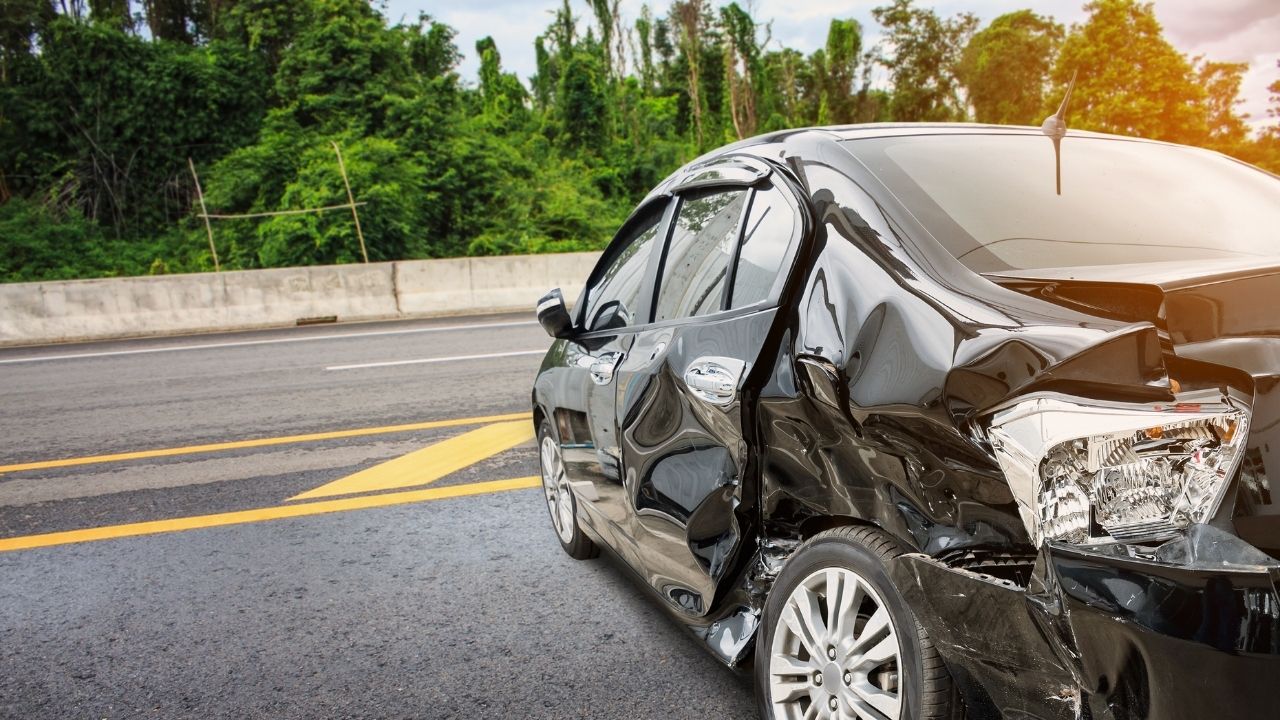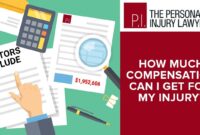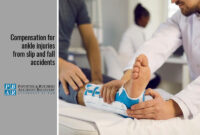What Evidence Do You Need for a Successful Car Accident Claim? Successfully navigating the complexities of a car accident claim hinges on possessing the right evidence. This process can feel overwhelming, but understanding the crucial pieces of evidence—from police reports and witness testimonies to medical records and photographic documentation—is key to building a strong case and achieving a fair settlement.
This guide will illuminate the path, providing a clear understanding of the evidence you need to support your claim and increase your chances of a successful outcome.
The strength of your claim rests on meticulously gathered and presented evidence. This includes official documentation, personal accounts, and visual representations of the accident and its aftermath. Each piece of evidence plays a vital role in establishing liability, proving the extent of your injuries and damages, and ultimately, securing the compensation you deserve. Let’s explore the key elements in detail.
Police Report and Investigation
A police report serves as a crucial piece of evidence in a car accident claim. It provides an objective account of the incident from the perspective of law enforcement. A thorough police investigation helps determine fault and liability, significantly impacting the success of your claim.
Information Found in a Police Report
Police reports typically include details such as the date, time, and location of the accident; descriptions of the vehicles involved; statements from those involved; witness accounts; diagrams illustrating the accident scene; and a determination of fault, if one is made. The accuracy and completeness of this information are vital for your claim.
Role of Police Investigation in Determining Fault and Liability, What Evidence Do You Need for a Successful Car Accident Claim
The police investigation aims to reconstruct the accident, identifying contributing factors and assigning responsibility. While not always conclusive, the police report’s findings regarding fault can heavily influence insurance company decisions and court proceedings. However, it’s important to remember that the police report is not the sole determinant of liability.
Obtaining a Copy of the Police Report
You can typically obtain a copy of the police report by contacting the police department that responded to the accident. There might be a fee involved. You can usually request the report in person, by mail, or online, depending on the department’s procedures.
Key Elements of a Police Report
| Element | Importance in Claim |
|---|---|
| Date, Time, and Location | Establishes the context of the accident. |
| Descriptions of Vehicles Involved | Provides details about the condition of the vehicles before and after the accident. |
| Statements from Involved Parties | Offers perspectives from those involved, although these may be biased. |
| Witness Accounts | Provides independent accounts of the events. |
| Diagram of the Accident Scene | Visually represents the accident’s layout and the positions of the vehicles. |
| Determination of Fault (if any) | Indicates the police’s assessment of responsibility, although it’s not legally binding. |
Witness Testimony
Witness accounts can provide valuable corroboration for your version of events. Independent perspectives can significantly strengthen your claim, particularly if they align with your account of the accident.
Information Witnesses Can Offer
Witnesses can offer information about the speed of the vehicles, the sequence of events leading up to the collision, the actions of the drivers, road conditions, and any other relevant details observed at the scene. Their observations can help to support or refute claims of negligence.
Challenges of Relying Solely on Witness Testimony
Witness accounts can be unreliable. Memory can be faulty, and witnesses may be biased or have limited visibility of the accident. Therefore, it’s crucial to corroborate witness testimony with other evidence.
Gathering Witness Information
Obtain the witness’s name, address, phone number, and email address. Take a written or recorded statement as soon as possible after the accident, detailing their observations. Be polite and respectful when gathering information.
Witness Statement Form

A standardized form ensures consistency and completeness in collecting witness statements. The form should include fields for contact information, date, time of the accident, and a section for a detailed account of the events witnessed. Consider adding space for the witness to sign and date their statement.
Medical Records and Documentation
Medical records are essential to demonstrate the extent of your injuries and the related expenses incurred. Thorough documentation of your medical treatment is crucial for a successful claim.
Crucial Medical Records
Examples include doctor’s notes, hospital records, diagnostic test results (X-rays, MRIs), therapy records (physical therapy, occupational therapy), and bills for medical expenses. These records provide objective evidence of your injuries and the necessary treatment.
Importance of Documenting Medical Treatments
Meticulous documentation of all medical treatments, therapy sessions, and medication directly resulting from the accident is crucial. This ensures a complete picture of your recovery process and associated costs.
Obtaining and Organizing Medical Records
Request copies of your medical records from your healthcare providers. Organize them chronologically and clearly label them. Keep a copy for your records.
Typical Medical Expenses Claimed
- Doctor visits
- Hospital stays
- Surgery
- Diagnostic tests
- Prescription medications
- Physical therapy
- Occupational therapy
- Chiropractic care
- Mental health therapy
Vehicle Damage Assessment

Assessing vehicle damage accurately is critical for determining repair costs and supporting your claim. Multiple methods can be used to assess the damage, each with its own advantages and limitations.
Methods for Assessing Vehicle Damage
Methods include visual inspection by a qualified mechanic, detailed photographic documentation, and obtaining repair estimates from reputable auto body shops. A comprehensive approach often involves a combination of these methods.
Photographs and Repair Estimates
High-quality photographs of the vehicle damage from multiple angles are essential. Repair estimates from qualified mechanics provide a detailed breakdown of repair costs, serving as crucial evidence to support your claim.
Documentation for Vehicle Damage Claims
Necessary documentation includes photographs of the damage, repair estimates, invoices for parts and labor, and any receipts for related expenses (e.g., towing).
Comparing Different Types of Assessments
Visual inspections are quick but may miss hidden damage. Repair estimates are more detailed but can vary depending on the shop and the mechanic’s assessment. Combining methods offers the most comprehensive and accurate assessment.
Insurance Policy Information
Understanding your insurance policy is crucial for navigating the claims process. Knowing your policy’s coverage limits and procedures is essential for a smooth and successful claim.
Key Elements of an Insurance Policy
Relevant elements include coverage limits for liability, collision, and comprehensive; deductibles; and the claims process Artikeld in your policy. Review your policy carefully before filing a claim.
Filing a Claim with Your Insurance Company
Typically, you file a claim by contacting your insurance company’s claims department, either by phone or online. Follow their instructions carefully and provide all necessary documentation.
Information Required by Insurance Companies
Insurance companies usually require information about the accident, including the date, time, location, and involved parties; police report information (if available); witness details; medical records; and vehicle damage documentation.
Checklist of Documents for Insurance Claim
- Copy of your insurance policy
- Police report
- Witness statements
- Medical records
- Photographs of the accident scene and vehicle damage
- Repair estimates
- Proof of lost wages (if applicable)
Photographs and Video Evidence
Visual evidence can powerfully support your claim by providing objective documentation of the accident scene, vehicle damage, and the surrounding circumstances.
Value of Photographic and Video Evidence
Photographs and videos can capture details that might be overlooked in written reports or statements. They provide irrefutable evidence of the accident’s severity and the extent of the damage.
Capturing and Preserving Evidence
Take clear, well-lit photographs and videos from multiple angles. Ensure the images are timestamped and geotagged (if possible). Store the evidence securely in a protected location.
Ideal Content of Photographs and Videos
Capture images of the accident scene, showing the positions of the vehicles, road conditions, and any visible damage. Record videos of the scene and any visible injuries.
Beneficial Images and Videos
Examples include wide shots of the accident scene, close-up shots of vehicle damage, images showing skid marks or debris, and videos capturing the immediate aftermath of the accident and any visible injuries. Videos of witness interviews can also be beneficial.
Financial Records: What Evidence Do You Need For A Successful Car Accident Claim
Financial records are essential for documenting and substantiating lost wages, medical expenses, and other financial losses resulting from the accident. Accurate record-keeping is crucial for a successful claim.
Examples of Financial Records
Examples include pay stubs, tax returns, bank statements, invoices for repairs, medical bills, and receipts for other expenses related to the accident. These records provide concrete evidence of your financial losses.
Documenting and Organizing Financial Records
Keep all financial records related to the accident organized and readily accessible. Create a spreadsheet or use a file-management system to track your expenses.
Types of Financial Losses

Common financial losses include lost wages, medical expenses, property damage, vehicle repair costs, and other out-of-pocket expenses.
Calculating Lost Wages
To calculate lost wages, determine your average daily or hourly wage, multiply it by the number of days or hours missed due to the accident, and deduct any income received during that period (e.g., sick leave pay). For example, if your daily wage is $150 and you missed 10 days of work, your lost wages would be $1500. This is a simplified calculation; actual calculations may be more complex.
Successfully pursuing a car accident claim requires a strategic and comprehensive approach to evidence gathering. From securing a police report and collecting witness statements to documenting medical treatments and vehicle damage, a well-organized and detailed presentation of evidence is paramount. Remember, the more thoroughly you document the accident and its consequences, the stronger your case will be. By meticulously assembling the necessary evidence, you significantly increase your chances of a fair and favorable resolution to your claim.
Take proactive steps to protect your rights and ensure you receive the compensation you deserve.
FAQ Overview
What if I don’t have a police report?
While a police report is beneficial, it’s not always mandatory. Other evidence, such as witness testimonies and photographic evidence, can still support your claim. However, the absence of a police report may make proving fault more challenging.
How long do I have to file a claim?
Statutes of limitations vary by state and type of claim. It’s crucial to consult with a legal professional to understand the applicable deadlines in your jurisdiction.
What if my injuries are not immediately apparent?
Delayed-onset injuries are common after car accidents. It’s essential to seek medical attention promptly and document all injuries, even if they develop later. Keep detailed records of all medical treatments and expenses.
Can I negotiate a settlement without a lawyer?
While possible, it’s often advisable to consult with a legal professional, especially in complex cases. A lawyer can help ensure you receive a fair settlement and protect your rights.



